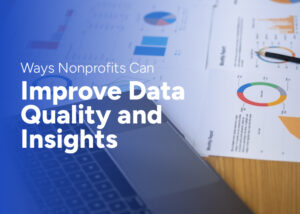This year marked the 97th anniversary of the American Association of Community College’s Annual Convention. I’ve been fortunate to attend this event every year for the last ten years. I’ve even had the honor of presenting several times. This year’s convention theme, “Community Colleges: America’s North Star,” was a particularly interesting one to me. The conference program outlined the following about the theme choice:
In an ever-changing world, community colleges are constant and dependable, responding to the needs of the nation’s citizenry, and the changing economy. Despite the changing politics of the country, community colleges will always remain that fixed point by which people can set their compasses to navigate change successfully.
As consistent as the community college world is in meeting the needs of students, communities, and businesses – I sensed some clear emerging trends at this important national gathering that are shifting what it means to be “America’s North Star.” From my fundraiser’s point of view, here are the 5 most critical:
- Economic Development and Community College Missions are Inextricably Linked: Almost all our booth’s visitors were thrilled to see a national fundraising company with solid footing in BOTH the community college and economic development world. Many Presidents and Chancellors who visited us noted the specific role they played in their local workforce and economic development organizations, including several who participated in a prior capital campaign with Convergent.
- Community College Faculty is Becoming an Important Part of the Fundraising Process: Fundraising is no longer a spectator sport when it comes to community college faculty and staff. These leaders are now playing active and critical roles in the identification, cultivation, solicitation, and stewardship of donors – especially within prioritized industry areas.
- Lines are Blurring between Foundation and College Strategic Plans: I conducted a session on College-Foundation Joint Strategic Planning with Rachelle Karstons from Indian Hills Community College in Iowa. We were both surprised that half of our session’s attendees were from colleges and the other half were from the college’s foundations – and ALL were interested in creating a joint set of measurable outcomes tied to one another strategically.
- The Role of the President in Fundraising is Increasing: Community College Presidents are expected to do many things, touching all areas of the college and community. The trend over the past several years has been the prioritization of both fundraising and workforce development in the daily activities of the President. John Rainone, President of Dabney S. Lancaster Community College, who co-presented a session on this subject with me, noted that presidents are now expected to dedicate half their time to fundraising and workforce development issues.
- Promise Programs as a Catalyst to Enrollment and Retention: With the national movement afoot for Promise Programs to help make a community college education free for as many deserving students as possible, one unintended side-effect for fundraisers is determining how to help traditional scholarship donors discover complementary ways that their gifts can make a difference. Plenty of buzz abounds for securing non-scholarship access funds focused on things like books, transportation, childcare, and emergency areas. This ensures a complementary matrix of giving that impacts enrollment and retention of students.
I look forward to seeing how these trends continue to evolve and impact our industry over the next year. What other developing trends do you think will influence the role community colleges play in our country over the next several years?






